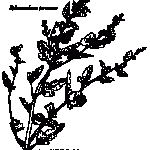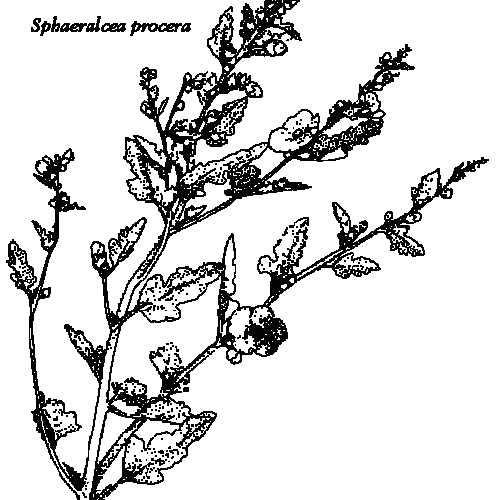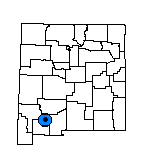Description
Stout perennial herb; stems woody at the base, to 3 m tall with multiple ascending branches; leaves 1-5 cm long, rugose, with stellate hairs, 3-lobed, the lateral lobes shorter than the central lobe, and irregularly dentate; flowers numerous in elongate, leafy inflorescences; calyx segments about 5 mm long, densely pubescent; petals 5, purplish-pink, 5-10 mm long; stamens numerous, filaments united at the base; fruit a round schizocarp dividing into about 10 pie-shaped segments (carpels); carpels to 3.5 mm long lacking apical cusps and having net-like reticulations on lower portions of the side walls. Flowers July to September.
Similar Species
Sphaeralcea laxa rarely reaches 3 m in height (2 m is exceptional) and the carpels have apical cusps. The leaves of S. laxa average more deeply lobed than in the type of S. procera. Flower color of the sympatric S. laxa is variable, but reddish orange is most common. Sphaeralcea incana leaves are usually entire and the carpels are obtuse to cuspidate. Flowers of the sympatric S. incana are variable in color, but shades of orange to red are more common than pink to lavender. Sphaeralcea polychroma is also a large plant, but differs from S. procera by the presence of apical cusps on the carpels. Sphaeralcea polychroma is endemic to the Rio Grande valley of central and southern New Mexico.
Habitat
Unknown. The type collection is from a sandy arroyo in Chihuahuan desert grassland at about 1,350 m (4,400 ft).
Conservation Considerations
This plant has not been relocated despite repeated searches of the type locality. If a good taxon, it may be extinct. The plant may have also been an aberrant form of another taxon. Nevertheless, searches near the type locality should be repeated.
Important Literature
*New Mexico Native Plants Protection Advisory Committee. 1984. A handbook of rare and endemic plants of New Mexico. University of New Mexico Press, Albuquerque.
Kearney, T.H. 1942. The North American species of Sphaeralcea subgenus Eusphaeralcea. University of California Publications in Botany 19:1-127.
Knight, P.J. 1985. Status report on Sphaeralcea procera. For: U.S. Fish and Wildlife Service, New Mexico Ecological Services Field Office, Albuquerque.
La Duke, J.C. 1985. A new species of Sphaeralcea (Malvaceae). The Southwestern Naturalist 30(3):433-436.
*Porter, C.L. 1943. A new species of Sphaeralcea from New Mexico. Bulletin of the Torrey Botanical Club70(5):531-532.



